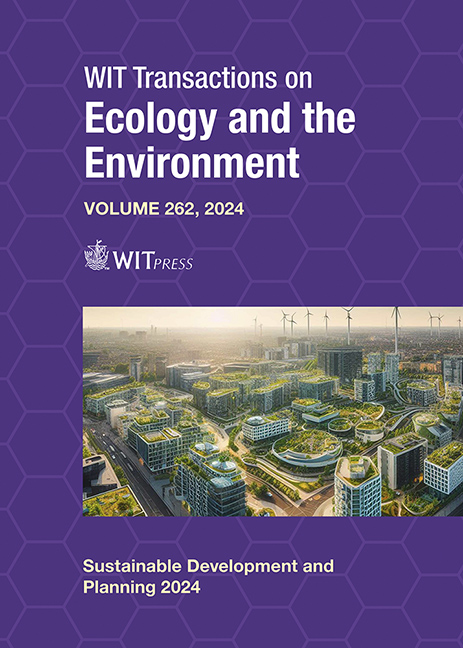EXPLORING ENVIRONMENTAL IMPACTS IN THE BICYCLE HELMET MARKET: A LIFE CYCLE ASSESSMENT APPROACH
Price
Free (open access)
Transaction
Volume
262
Pages
12
Page Range
727 - 738
Published
2024
Paper DOI
10.2495/SDP240601
Copyright
Author(s)
LUÍS SILVA, BRUNA MACHADO, PEDRO SÁ, BRUNO SILVA, NATÁLIA LADEIRA
Abstract
The global bicycle helmet market was worth €675 million in 2022 and is projected to reach €857 million by 2031, with a compound annual growth rate of 2.4%. Traditional materials used in the referred market can have a considerable environmental impact, making it imperative for manufacturers to conscientiously evaluate and address their products’ sustainability. This study aims to evaluate the environmental impacts of one bicycle helmet composed mainly of expanded polystyrene (EPS) and polycarbonate (PC), using life cycle assessment, based on ISO 14040:44, and to compare two end-of-life scenarios. In the first scenario, only the recycling of paper and cardboard packaging was considered. In the second, the recycling of components composed of EPS and PC was included. The scope of analysis encompassed the entire life cycle from cradle to grave, including raw material transportation, component production, packaging, helmet transportation, distribution and disposal. The analysis was performed using SimaPro 9.5.0.1 software and ReCiPe Midpoint (H) (2016) v1.08 method, incorporating EcoInvent version 3.9.1 as the chosen database. As a result, the packaging stage emerged as the most negatively impactful, which is understandable considering that packaging is often the heaviest component of the product. Conversely, the disposal stage exhibited the most positive impact in both scenarios due to the environmental benefit associated with recycling. Finally, the second scenario was found to have 35.2% less environmental impact than the first, attributed to a greater proportion of recycled components.
Keywords
LCA, bicycle, environmental, impacts, helmet, sustainability, polymers





